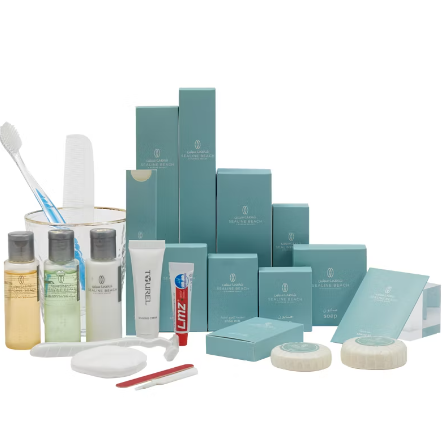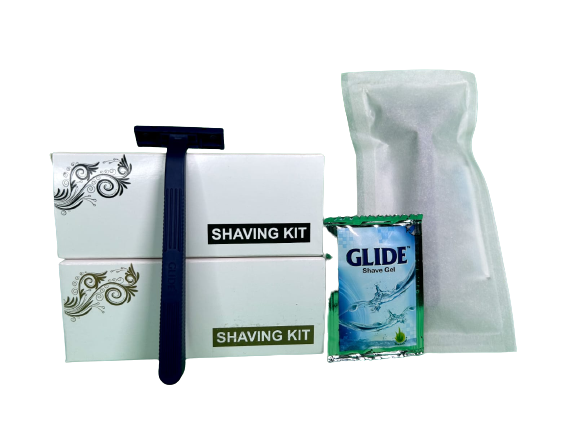The hospitality industry has witnessed remarkable transformations over the decades, and one of the most fascinating areas of change is the manufacturing of hotel amenities. From simple soap bars to luxurious, eco-friendly toiletries and high-tech room features, hotel amenities reflect broader societal trends, technological advancements, and changing guest expectations.

The Early Days: Functionality Over Luxury
In the early 20th century, hotels focused primarily on providing basic necessities. Amenities were limited to soap bars, towels, and sometimes stationery. These items were often sourced locally, with little thought given to branding or customization. The primary goal was to meet essential hygiene and convenience needs.
- Materials: Early amenities were crafted from simple, natural materials like lye-based soap and cotton towels.
- Manufacturing Scale: Small-scale production dominated, as most hotels sourced items from local suppliers.
The Mid-20th Century: The Rise of Branding
The post-war boom of the 1950s and 1960s saw a shift toward branded amenities. Hotels began recognizing the potential of amenities as marketing tools. The introduction of travel-sized toiletries with logos marked the beginning of customization in hotel amenity manufacturing.
- Industrial Advancements: Mass production techniques enabled hotels to order bulk quantities of branded items.
- Standardization: Chains like Hilton and Holiday Inn pioneered consistent amenity offerings, ensuring uniformity across properties.
- Luxury Begins: Upscale hotels introduced plush bathrobes, slippers, and higher-quality soaps to differentiate their offerings.
The 1980s and 1990s: Emphasis on Luxury and Comfort
By the 1980s, the hospitality industry had entered an era of luxury. Guests expected more than just basic toiletries. High-end brands like Bulgari and L’Occitane partnered with hotels, elevating the standard of in-room amenities.
- Customization: Guest preferences led to personalized amenities, such as hypoallergenic products.
- Innovations in Packaging: Attractive designs and unique bottle shapes became a norm, emphasizing luxury.
- Expanding Offerings: Beyond toiletries, hotels began offering coffee machines, mini-bars, and tech-based amenities.
The 21st Century: Sustainability and Technology Take Center Stage
The turn of the millennium marked a shift towards sustainability and technology in hotel amenity manufacturing. Growing environmental awareness and technological advancements reshaped the industry.
- Sustainability
- Eco-Friendly Materials: Biodegradable packaging, organic ingredients, and reusable dispensers gained traction.
- Local Sourcing: Hotels emphasized locally made amenities to reduce their carbon footprint.
- Certifications: Products meeting green certifications became a selling point for eco-conscious travelers.
- Technology Integration
- Smart Amenities: Keyless room entry, smart lighting, and voice-controlled systems became popular.
- Personalization through Data: Manufacturers developed AI-enabled devices that adjust settings based on guest preferences.
- Pandemic Effects
- The COVID-19 pandemic accelerated demand for single-use items and hygiene-focused amenities, like hand sanitizers and UV sanitizers.
Manufacturing Trends Across Decades
| Decade | Focus | Key Innovations |
|---|---|---|
| Early 20th | Basic Necessities | Simple soaps, towels |
| 1950s–1960s | Branding & Consistency | Logo-based toiletries, mass production |
| 1980s–1990s | Luxury & Comfort | Designer toiletries, bathrobes, coffee machines |
| 2000s–Present | Sustainability & Tech | Eco-friendly materials, smart devices |

Challenges in Modern Amenity Manufacturing
- Balancing Luxury and Sustainability
Manufacturers strive to create luxurious products that don’t harm the environment, such as biodegradable razors and compostable packaging. - Global Supply Chains
Hotels often rely on international suppliers, leading to logistical challenges and increased scrutiny on ethical sourcing. - Customization Costs
Personalization adds value but also increases production costs, especially for boutique hotels.
Future Trends in Hotel Amenity Manufacturing
- Circular Economy
Refillable dispensers and recycling programs will dominate, reducing waste. - AI-Driven Design
Predictive algorithms will tailor products based on guest demographics and preferences. - Health-Centric Amenities
Wellness products like aromatherapy kits and advanced air purifiers will gain popularity. - Tech-Enabled Comfort
Smart mattresses, robotic assistants, and touchless controls will define the guest experience.

Conclusion
The evolution of hotel amenity manufacturing reflects broader societal, technological, and environmental changes. From humble beginnings to the luxurious and sustainable offerings of today, amenities have become an integral part of the guest experience. By adapting to trends and innovating with purpose, the industry continues to redefine comfort and hospitality.
